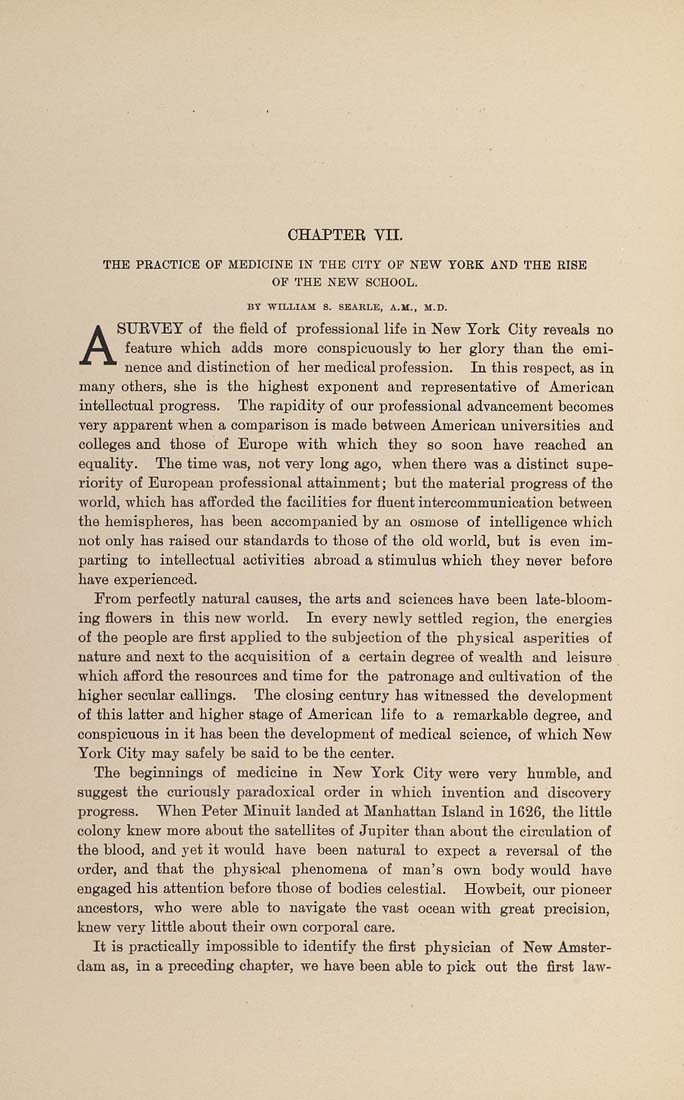CHAPTER Vn.
THE PRACTICE OF MEDICINE IN THE CITY OF NEW YORK AND THE RISE
OF THE NEW SCHOOL.
BY WmLIAM S. SKARLB, A.M., M.D.
A SURVEY of the field of professional life in New York City reveals no
feature which adds more conspicuously to her glory than the emi¬
nence and distinction of her medical profession. In this respect, as in
many others, she is the highest exponent and representative of American
intellectual progress. The rapidity of our professional advancement becomes
very apparent when a comparison is made between American universities and
colleges and those of Europe with which they so soon have reached an
equality. The time was, not very long ago, when there was a distinct supe¬
riority of European professional attainment; but the material progress of the
world, which has afforded the facilities for fiuent intercommunication between
the hemispheres, has been accompanied by an osmose of intelligence which
not only has raised our standards to those of the old world, but is even im¬
parting to intellectual activities abroad a stimulus which they never before
have experienced.
From perfectly natural causes, the arts and sciences have been late-bloom¬
ing fiowers in this new world. In every newly settled region, the energies
of the people are first applied to the subjection of the physical asperities of
nature and next to the acquisition of a certain degree of wealth and leisure
which afford the resources and time for the patronage and cultivation of the
higher secular callings. The closing century has witnessed the development
of this latter and higher stage of American life to a remarkable degree, and
conspicuous in it has been the development of medical science, of which New
York City may safely be said to be the center.
The beginnings of medicine in New York City were very humble, and
suggest the curiously paradoxical order in which invention and discovery
progress. When Peter Minuit landed at Manhattan Island in 1626, the little
colony knew more about the satellites of Jupiter than about the circulation of
the blood, and yet it would have been natural to expect a reversal of the
order, and that the physical phenomena of man's own body would have
engaged his attention before those of bodies celestial. Howbeit, our pioneer
ancestors, who were able to navigate the vast ocean with great precision,
knew very little about their own corporal care.
It is practically impossible to identify the first physician of New Amster¬
dam as, in a preceding chapter, we have been able to pick out the first law-
|








